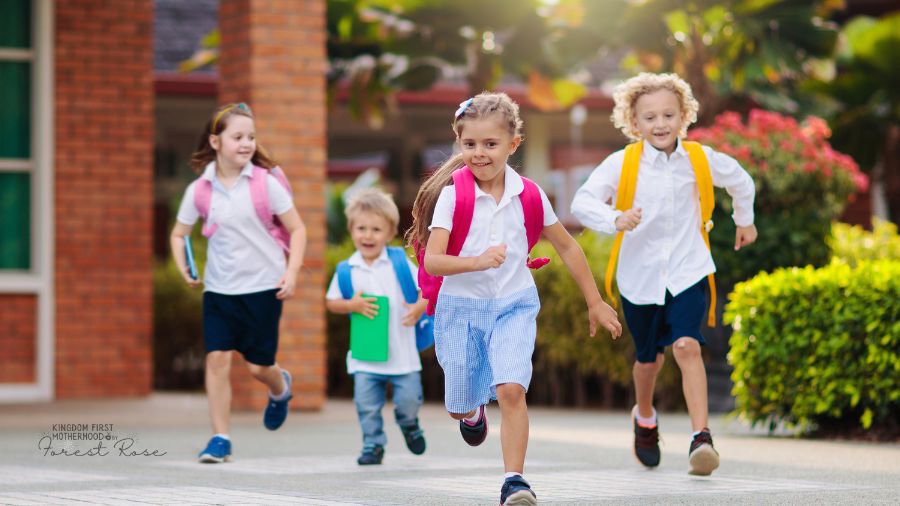You know the moment—the bell rings, little backpacks bounce, and just like that, it’s go time. Parents kick into full-speed mode, juggling pickups, snacks, homework, and maybe even a meltdown or two before dinner hits the table. Those after-school hours? They can feel like a high-stakes game of emotional and logistical Tetris. That’s why quality after-school programs and safe spaces for kids matter so much. It’s not just about supervision—it’s about creating intentional, enriching playtime that supports their well-being when it counts most.

We often think of school as the primary environment for learning and growth, but what about the hours outside the classroom? Before and after school can be powerful times for kids to continue growing socially, emotionally, and even academically—if they’re in the right space.
Creating safe, consistent, and supportive environments for children not in class helps shape their sense of security, confidence, and belonging. Whether it’s an early-morning drop-off or the hours between school and bedtime, these in-between moments matter. So, how can we ensure kids are supported, safe, and thriving, no matter what time of day it is?
Let’s look beyond the classroom walls.
What Makes a Space Truly Safe for Kids
When discussing “safe spaces” for kids, it’s easy to picture fences and ID badges. Physical safety is essential, but there’s so much more to it than locked doors and adult supervision.
A genuinely safe space is one where children feel emotionally secure in the after-school program. They can be themselves, try new things, and know that mistakes won’t lead to shame or judgment. These environments foster trust, the cornerstone of any meaningful relationship, especially between children and the adults who guide them.
There’s also a strong emphasis on inclusivity. Kids need to feel like they belong, no matter their background, personality, or abilities. Whether they’re quiet, high-energy, neurodivergent, or somewhere in between, a safe space adapts to meet them where they are.
Experts in child development often highlight consistency and predictability as keys to creating emotional safety. When kids know what to expect—who will be there, what activities they’ll do, and how the day will unfold—they feel grounded. This sense of routine builds trust and gives them the confidence to explore and engage.
Then there’s the human factor. Well-trained, empathetic, and genuinely present staff and caregivers can make a difference. It’s not about having a flawless program; it’s about having adults tuned in, compassionate, and ready to connect.
Finding Support Through Community Programs
Community programs become quiet heroes as families search for ways to keep their kids safe and supported during off-school hours. These after-school programs often serve as the bridge between the structured world of school and the hustle of home life, offering continuity and care when it matters most.
Across neighborhoods, schools, and community centers, programs are emerging that don’t just supervise kids—they engage them. These programs spark curiosity, foster friendships, and offer a sense of calm and consistency on otherwise busy days. Parents are no longer just looking for a place to “watch” their kids; they seek environments that enrich and support them.
This is where trusted before and after school care services come into play. These programs are more than just a convenience—they’re a lifeline. For working families, having reliable, high-quality care during those in-between hours can mean the difference between daily stress and daily peace of mind.
The best after-school programs often combine structure and freedom. Kids might receive homework help, hands-on activities, outdoor play, or mindfulness sessions. But beyond the schedule, what truly matters is the atmosphere. A nurturing setting with caring adults and engaging options can be what a child needs to feel safe and valued.
Let’s not forget accessibility. Affordable, well-run, and embedded local programs make it easier for all families, not just those with extra resources, to access quality care. You’ve got something special when you combine consistency, inclusivity, and a dash of fun.
The Role of Play and Enrichment in Safe Spaces
There’s something magical about unstructured time paired with purpose. That’s where play and enrichment after-school programs come in. They’re not just “fun extras” but core ingredients in the recipe for emotional and social development.
When kids are given room to play, they aren’t just burning energy. They’re building skills. Cooperative games teach teamwork. Art and music spark creativity and emotional expression. Science and building projects nurture problem-solving and curiosity. Even something as simple as playing tag can teach kids about boundaries, fairness, and resilience.
And when it comes to enrichment? That’s where the real magic happens. Dance classes, gardening, robotics, and cooking aren’t just ways to pass time. They give kids new tools to explore the world and express who they are. In safe spaces, enrichment isn’t just about academic boost, confidence, joy, and a sense of accomplishment.
Most importantly, these activities give kids choices. Having the power to choose how to spend their time reinforces autonomy and self-worth. It sends a message: “Your interests matter. Your voice matters. You matter.” That’s the heartbeat of any safe space.
Children who engage in meaningful, enjoyable activities are more likely to develop healthy self-esteem and positive relationships. That impact stretches beyond the playground or art table—it shows up in classrooms, at home, and throughout their lives.
After-school programs do so much more than fill the gap between school and dinner—they give kids structure, enrichment, and a safe place to just be kids. According to the Nebraska Department of Education, quality after-school care supports academic achievement, encourages positive behavior, and provides peace of mind for working families. It’s not just about keeping kids busy—it’s about helping them thrive.
Empowering Kids Through Routine and Belonging
Every kid needs a soft place to land—somewhere that feels familiar, predictable, and welcoming. That sense of routine and belonging might be among the safest space puzzle’s most underrated pieces.
Think about the after-school environment that greets a child daily: the same smiling adult at sign-in, the familiar snack table, and their usual crew of friends already deep into a game of Uno. That kind of consistency creates emotional safety. Kids know the rules, the rhythm, and the relationships, which makes a big difference.
Routine isn’t about rigid structure—it’s about dependability. When children know what’s coming next, it lowers anxiety and gives them space to relax into the moment. Reliability is a gift in a world that sometimes feels unpredictable or overwhelming.
Belonging, meanwhile, transforms a safe space from “just okay” to genuinely life-changing. It’s in how staff greet each child by name or how peer groups form around shared interests. When kids feel part of something—a group, a program, a community—they thrive. They’re more likely to open up, try new things, and form lasting friendships.
Parents notice the shift, too. When their child starts looking forward to the mornings or afternoons spent outside the classroom, it’s a sign that something is clicking. That sense of security and connection isn’t just good for today—it builds a foundation for emotional resilience tomorrow.
Building a Network of Care in After-School Programs
As the school day ends, kids don’t stop growing, and neither should the support around them. Safe, enriching spaces beyond the classroom aren’t just a nice-to-have. They’re crucial in helping children build confidence, make connections, and feel genuinely cared for.
Whether through community centers, school-based after-school programs, or local partnerships, families have more opportunities than ever to create consistent support systems for their children. When these spaces are rooted in empathy, creativity, and a deep understanding of kids’ emotional needs, they become more than just stopgaps—they become places where kids flourish.
So, as you think about what comes after the bell rings, remember this: the most impactful environments aren’t always the ones with the fanciest gear or most enormous budgets. They’re the ones that feel warm, safe, and just a little bit like home.
For more homeschooling inspiration, tips and encouragement, make sure to follow KFH on Facebook, Pinterest, Instagram and Twitter, and subscribe to our Newsletter for some FREE GOODIES!
Forest Rose is a God Loving, Blessed Wife, & Mama to 3 girls. She’s passionate about lifting moms out of the trenches that are discouraged, overwhelmed, or feeling alone or isolated. Her hope is to point them to Christ and equip them to rise up with a newfound hope and joy within, that He alone can provide. Besides blogging, she also loves to create printables!




Leave a Reply